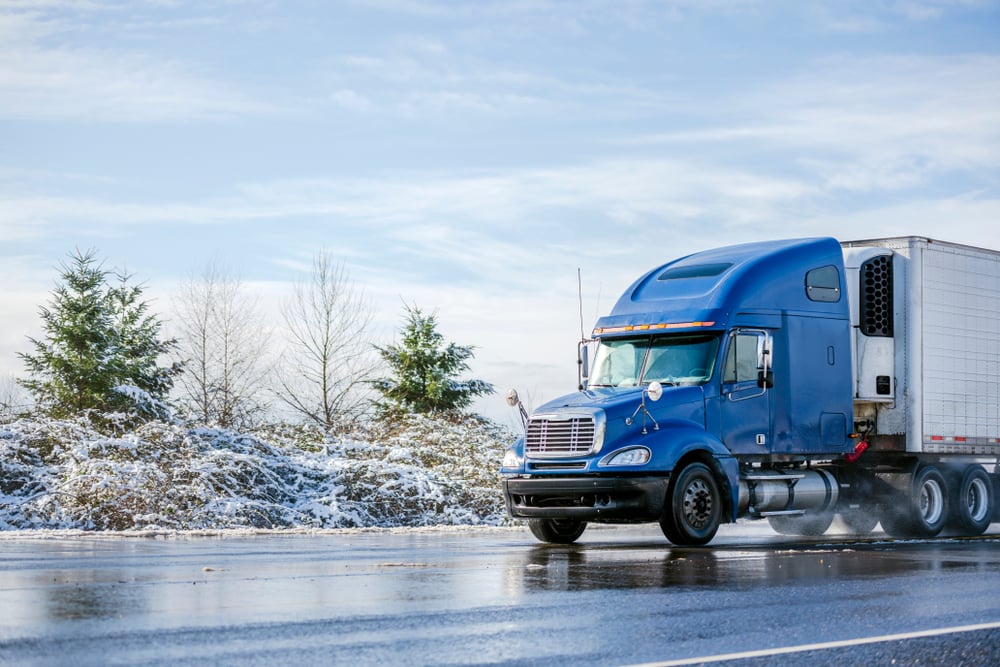REDWOOD LOGIN
Redwood PortalLTL
SCS
SCS Support
Rockfarm

In a perfect world, every shipping container would arrive on time. There would never be problems with invoices, and temperature-controlled freight deliveries would thrive without issues. But we don’t live in that perfect world, do we?
The fact is, a cold supply chain has a litany of hurdles that can make things go south rather quickly. And when things go wrong; problems can snowball out of control.
Each day in North America, shippers move 200,000-plus cold storage shipping containers from manufacturing facilities to distribution warehouses and final recipients. These movements are frequently monitored for accurate temperatures and tracked via GPS satellite equipment and feature instant notifications for vendors, shippers, receivers, and carriers via multiple communication platforms.
With all these moving parts, a slight slip-up can trigger a significant disruption of service. That being said, there are four general areas of temperature-controlled shipping that require special attention to ensure problems don’t occur.
Let’s take a look at a few of the more common areas of cold supply chain movement that are prone to slip-ups. Hopefully, this blog post will give you a good idea of what problems you may face and how to minimize them.
The cold supply chain requires a lot of planning, paperwork control, and of course, safe and efficient freight movement. However, within each of these four areas are multiple microscopic steps that must be followed to a “T” to ensure temperature-controlled goods arrive safe and without exposure to harmful and potentially deadly bacteria.
Let's dig a little deeper and have a peek at what these four areas entail.
A cold supply chain movement requires excessive planning. This is due to the issues that occur when planning falls through, and trust us when temperature-controlled shipments fall through, it is always a drastic ordeal.
When temperature-controlled commodities are scheduled for movement, multiple parties need to work in conjunction to maintain a constant temperature for the freight. To achieve this goal, the manufacturer needs to work with reputable carriers to schedule pick-ups so their products are not outside of the temperature ‘danger zone’. Furthermore, carriers need to work with recipients, to schedule deliveries to ensure that the products are not sitting in a truck waiting on the customer to receive it.
Throw in other shipping variables such as LTL depot transfers, distribution warehouses, and international shipping, and you have a whole new level of complexity. Planning any type of shipment is crucial, and even more so with temperature controlled shipments.
Get the planning right, and you are golden!
Another major contributor to cold supply chain chaos is the incorrect handling of freight.
The main reason why handling is a problem is that each product has unique temperature restrictions. For example, perishable fruits like lettuce have a shipping temperature window of approximately 20 degrees. On the other hand, dairy products must remain in temperatures ranging from 36 to 45 degrees.
When a shipper, receiver, storage depot, carrier, or other cold supply chain partner makes a mistake in the handling of temperature-controlled products, bacteria can spread and contaminate all other perishable products. Not only does this pose a health threat, but it also can quite possibly lead to legal issues.
Technology has helped improve the efficiency and safe movement of cold storage commodities. However, not all carriers have access to the latest and greatest temperature-controlled equipment. This introduces a potential problem with moving perishable commodities.
To remedy this issue, before you hire a carrier, do your due diligence and research. Verify that they use the latest reefer containers, perform regular inspections and that they are utilizing the latest GPS and dynamic routing tools.
The USDA and FDA issue several regulations intended to keep the cold supply chain safe. Documentation is a critical step in these regulations.
This paperwork comes in the form of reports, monitoring standards, and other contracts. Furthermore, the U.S. Department of Transportation helps by mandating carriers that ship temperature-controlled commodities. This is for maintaining accurate records of the container temperatures throughout the movement.
However, all the paperwork regulations are worthless if all parties have documented inaccurate information. To avoid potential problems, everyone involved in the cold supply chain needs to be transparent with all recorded data. Additionally, if mistakes are noticed, they need to be corrected and communicated.
The cold supply chain and temperature-controlled shipping have become safer than ever in recent years. With the advent of new technologies, a lot fewer issues arise with temperature controlled shipping than in the past. Experience also makes a significant difference in reducing lapses in the shipping of perishable goods.
Shippers who might be new to the cold supply chain would find it beneficial to work with a reputable 3PL. As a matter of fact, if you want to save yourself time, money, and frustration, reach out to us here at Redwood Logistics today!